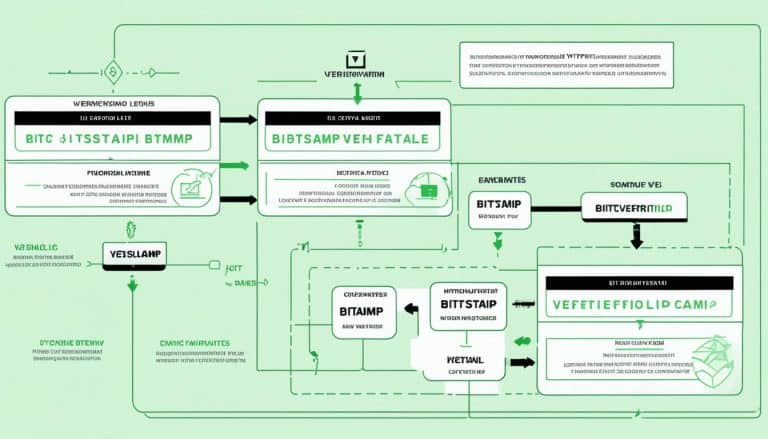Xrp Partnerships And Technological Advancements
Ripple is a real-time gross settlement system, currency exchange and remittance network that was created by Ripple Labs Inc. It is an open source protocol designed to enable quick and secure monetary transactions between two parties. The Ripple platform uses the cryptocurrency XRP for liquidity and offers lower transaction fees than other cryptocurrencies. As it continues to gain traction in the financial sector, Ripple has formed several key partnerships with banking institutions, financial services companies, and technological partners. These partnerships have allowed them to create more efficient payment solutions through their XRP ledger technology, xVia, xRapid, and xCurrent protocols as well as expand their reach by building out the RippleNet network. In this article we will look at some of these partnerships and advancements made by Ripple over the past few years.
Overview of Ripple
Ripple is a payments network that utilizes blockchain technology in order to facilitate financial transactions; it has become increasingly popular due to its strategic partnerships and technological advancements, but what makes it truly unique? The Ripple platform offers the capability of near-instantaneous money transfers across different currencies, with low transaction fees and minimal risk of fraud. Additionally, the native cryptocurrency XRP can be used for international remittances and other forms of payment processing. This provides great utility for both individual users and businesses as they are able to send funds globally without having to depend on traditional banking systems. Furthermore, Ripple’s infrastructure allows for rapid scaling so that companies can quickly expand their operations worldwide. As a result, many banks have chosen to partner with Ripple in order to take advantage of its innovative technology. This has enabled banks to provide faster services while lowering costs associated with sending money abroad. With these advantages combined, Ripple is setting itself up as an industry leader in cross-border payments solutions. Transitioning into this next section about banking partnerships reveals how widely recognized the potentials for XRP utility are becoming among major financial institutions around the world.
Banking Partnerships
Banking institutions have increasingly turned to Ripple’s blockchain solutions in order to leverage the potential of distributed ledger technology for faster, more secure payments. This has led to a number of partnerships with banks and other financial institutions around the world. The benefits that Ripple provides include:
- Improved Cross-Border Payments: Ripple enables banks to send money across borders much quicker than traditional methods, reducing transaction time from days to seconds.
- Digital Wallets: Banks can leverage Ripple’s digital wallets, allowing them to securely store and transfer funds without any intermediary fees or delays.
These partnerships have allowed banks to benefit from the advantages of blockchain technology while also providing their customers with faster and more secure payment options. As a result, Ripple is becoming an increasingly popular choice for banking institutions who are looking for ways to improve their cross-border payments systems. With this in mind, it is clear that financial institution partnerships will continue to be an important part of Ripple’s growth strategy going forward.
Financial Institution Partnerships
As the world moves toward a more digital economy, financial institutions are recognizing the power of Ripple’s blockchain solutions to revolutionize cross-border payments and provide customers with faster and more secure options. Ripple has forged partnerships with some of the largest global banks, including Santander, Standard Chartered Bank, UBS AG, and American Express. These collaborations have enabled these organizations to leverage RippleNet’s distributed ledger technology (DLT) to increase the speed of transactions while maintaining regulatory compliance. This increased speed is especially beneficial for international payments as it eliminates intermediaries between bank transfers that can slow down processing times. Furthermore, these partnerships demonstrate how DLT can be used by financial institutions in a secure and compliant manner. By leveraging Ripple’s advanced encryption technology, companies can ensure their customer data remains private and secure during any transaction or transfer.
The success of these financial institution partnerships highlights Ripple’s commitment to providing innovative solutions in an increasingly digital world. As these relationships continue to expand across the globe, it is likely that other major financial players will join on board as well. This shift towards DLT has far-reaching implications for both banking and finance in general—and will no doubt open up new opportunities in terms of cost savings and efficiency gains for businesses large and small alike. Transitioning into technology partnerships provides another avenue for exploring these advantages further.
Technology Partnerships
Ripple has been increasingly focused on technology partnerships, such as the collaboration with Coil and Hyperledger. Ripple’s partnership with Coil is aimed at creating a more seamless experience for content creators to receive payments in XRP. Furthermore, Ripple has joined the Hyperledger consortium to explore potential use cases of blockchain technology and develop enterprise-grade solutions using distributed ledger technologies. These partnerships demonstrate Ripple’s commitment to providing advanced technological solutions and unlocking the power of blockchain-based financial products.
Coil
Coil is a payments platform that leverages XRP and Interledger Protocol (ILP) to facilitate instant, low-cost, and global transactions. By using the Ripple API, Coil enables users to send real-time payments from any currency to any other currency with minimal fees.
The platform also provides access to various financial services such as lender of last resort financing and credit card processing for merchant customers. Coil also offers an innovative suite of features such as micropayments, smart contracts, and decentralized apps. As a result of its technology partnerships with major companies such as Microsoft Azure and IBM Hyperledger, Coil has become one of the leading players in the digital payments space. With its robust technology stack and wide range of products, Coil is poised to revolutionize the way people transact online.
Hyperledger
Hyperledger is a collaborative effort to advance cross-industry blockchain technologies, allowing developers to build and deploy distributed ledger applications with greater flexibility and resilience. The project is led by the Linux Foundation and it includes members such as Intel, JP Morgan, IBM and SAP. Hyperledger offers various tools for developing smart contracts using its Hyperledger Fabric platform. This technology enables businesses to develop secure distributed ledger applications that are highly scalable, private and robust. It also allows users to create custom code for their particular use cases without having to adhere to any specific rules or protocols. Additionally, it supports Smart Contract Technology which provides a reliable system of automated execution for digital agreements between parties involved in a transaction. All these features make Hyperledger an ideal choice for Ripple’s XRP Ledger technology which seeks to enable seamless international payments with low transaction costs.
XRP Ledger Technology
The XRP Ledger is a distributed financial technology that enables secure payments and exchange between different ledgers. At its core is the Interledger Protocol (ILP), which allows for communication between different ledgers to facilitate instant payments as well as access to Decentralized Exchanges. This type of technology creates opportunities for users to move money more quickly, easily, and securely than ever before.
Interledger Protocol
Innovative Interledger Protocol technology promises to revolutionize the way money is transferred between networks, facilitating secure and low-cost payments with unprecedented speed. The protocol allows users to conduct transactions across multiple ledgers without relying on a central ledger provider. This opens up numerous use cases for organizations, such as banks, exchanges, and payment processors. The following table outlines some of the key features and capabilities of the Interledger Protocol:
| Feature | Description | Use Cases |
|---|---|---|
| Atomicity | Enables atomic transaction execution across different ledgers | Cross-border payments, trading platforms |
| Secure Payments | Provides a secure layer to facilitate trustless payments between parties | E-commerce transactions, digital asset transfers |
| Low Cost | Minimizes fees associated with currency conversions or third party intermediaries | Remittances, international business transactions |
| Speed & Scalability | Supports real time settlement of large volumes of payments quickly and efficiently | Retail payments processing |
The Interledger Protocol offers an efficient solution for securely transferring funds between networks while minimizing costs. Its potential applications are far reaching; from enabling cross-border remittances to facilitating decentralized exchange operations. With its unique set of features and capabilities, ILP has emerged as an important platform for innovation in financial services. From this point forward we will explore how XRP Ledger’s decentralized exchange is contributing to the development of new technologies around digital assets.
Decentralized Exchange
Decentralized exchange technology has enabled the emergence of new financial services and products within the digital asset space. Decentralized security measures, such as atomic swaps, further allow for secure peer-to-peer trading without the need for a central authority or third party. This improved level of security has helped to encourage more users to enter into cryptocurrency markets and invest in digital assets. The use of decentralized exchanges also eliminates risk associated with centralization, allowing users to retain ownership and control of their funds throughout the transaction process. Additionally, these exchanges provide greater privacy for user data than centralized platforms do, allowing them to remain anonymous if desired. As a result, decentralized exchanges are becoming increasingly popular among traders looking for improved security, privacy and anonymity when trading digital assets. Moreover, this type of technology can open up new opportunities for XRP partnerships by offering innovative financial services that improve efficiency and reduce costs while providing enhanced levels of security and privacy. With this in mind, it is clear that distributed financial technology holds promise for XRP partnerships in terms of providing efficient solutions that also safeguard user data and funds securely.
Distributed Financial Technology
Distributed financial technology has enabled the emergence of new services and products within the digital asset space, providing improved levels of security, privacy, and anonymity for users. Ripple (XRP) is one example of a distributed financial technology that has been implemented in many areas such as open banking, digital payments and other financial services. This technology provides an efficient platform for customers to make transactions with reduced fees while allowing them to remain anonymous. Furthermore, it also allows businesses to access real-time global payment capabilities without having to deal with multiple currency exchanges. By utilizing distributed financial technologies like XRP, organizations have the potential to create new products and services that can be used across various markets without having to worry about regulatory compliance or additional costs.
Regulatory Compliance
Ripple has made significant strides towards regulatory compliance, with over 200 financial institutions now utilizing its services. Notably, the company is currently processing more than 1 million transactions per day, representing an impressive 20% growth in the past year. To ensure these transactions are compliant with regulations globally, Ripple has taken a number of steps to minimize their regulatory impact and meet stringent compliance requirements.
| Regulatory Impact | Compliance Requirements |
|---|---|
| AML/KYC | Know Your Customer (KYC) |
| Data Privacy | GDPR & CCPA |
| Regulatory Filing | SEC & FINRA Reporting |
| Cross-Border Payments | U.S. Patriot Act Compliance |
| Money Transmitter Licenses | State Licensing & Assessments |
Ripple’s commitment to regulatory compliance provides confidence to customers and creates a solid foundation for market expansion by allowing it to move into new markets quickly and efficiently.
Market Expansion
By leveraging its compliance measures, Ripple has enabled market expansion, allowing it to rapidly enter new markets with confidence. This has been done through a combination of enabling partners and corporate adoption. To that end, Ripple has:
- Signed partnerships with over 200 financial institutions in 40 countries
- Developed an Enterprise version of its flagship product xCurrent
- Launched the xRapid platform which offers on-demand liquidity solutions for cross-border payments
With these initiatives, Ripple is poised to expand further into global markets and usher in a revolution in international payments services. These advancements pave the way for tokenization which will be explored further in the next section.
XRP and Tokenization
XRP has been a major player in the cryptocurrency market, and is continuing to make strides in its expansion. As the digital asset grows in popularity, it is also becoming a leader when it comes to tokenization of payments. With its interoperability solutions, XRP can be used as a bridge currency between different fiat currencies and cryptocurrencies. This ability makes cross-border payments faster and more secure than traditional methods. Furthermore, tokenized payments allow for more efficient settlement systems since transactions are processed without the need for middlemen or intermediaries. By leveraging this technology, XRP has become an important platform for providing liquidity solutions that are essential for successful financial operations.
XRP Liquidity Solutions
XRP liquidity solutions have enabled efficient cross-border payments, allowing for increased financial autonomy and cost savings compared to traditional methods. Additionally, these solutions have the potential to reduce counterparty risk by providing a secure platform for peer-to-peer transactions.
These liquidity solutions include:
- Liquidity optimization – which provides a way to increase liquidity in markets with low volume or high volatility;
- Cross border payments – which makes it easier for businesses to transfer funds across borders while reducing foreign exchange fees;
- Swift integration – which simplifies the process of sending money overseas without having to use intermediaries; and
- Automated market makers – which allow users to buy and sell XRP quickly and securely on exchanges without having to wait for a matching order.
The combination of these features allows RippleNet On-Demand Liquidity (ODL) to provide an innovative solution that enables fast, low cost, and reliable remittances across borders, allowing customers around the world greater access to their funds.
RippleNet On-Demand Liquidity
RippleNet On-Demand Liquidity (ODL) provides a comprehensive solution for rapid and cost-effective international payments, allowing customers to access their funds with greater ease. Leveraging the power of XRP, ODL offers an innovative way to reduce friction in the global supply chain by providing instant liquidity to merchants and financial institutions. This technology also enables businesses to instantly convert one currency into another without having to pre-fund accounts in multiple currencies, thus reducing the need for costly foreign exchange transactions. By eliminating both cost and time-consuming processes, RippleNet ODL facilitates wider merchant adoption of digital assets in the payments space.
This capability sets RippleNet apart from xCurrent and xRapid, two other products offered by Ripple that serve different purposes; whereas xCurrent focuses on settlement speed using end-to-end tracking as its core feature, xRapid emphasizes low costs through its use of XRP as a bridge currency. Both have become popular within the banking sector but require significant setup times compared to ODL’s near instantaneous payments. With ODL offering direct access to liquidity markets around the world at competitive rates, it is becoming an increasingly attractive option for financial institutions and merchants alike. As such, it is likely that RippleNet ODL will continue developing further in order to capitalize on this opportunity.
xRapid Versus xCurrent
Compared to xCurrent, which emphasizes settlement speed through end-to-end tracking, xRapid focuses on providing low costs by utilizing XRP as a bridge currency – ‘a stitch in time saves nine.’ In contrast to other solutions, xRapid is able to offer scalability, cost savings, and speed that are unattainable with traditional methods. Moreover, its ability to reduce liquidity costs for banks offers financial institutions the option of quicker payments and lower fees.
The main differences between these two solutions include:
- xCurrent does not use XRP while xRapid does.
- xCurrent settles payments immediately while xRapid takes 2-3 minutes.
- The cost of using xCurrent is higher than that of using xRapid.
- The scalability offered by the former is much less than what the latter provides.
- Transactions made through the use of both solutions are highly secure; however, those conducted via xRapid have an added layer due to XRP’s consensus protocol.
These differences in features makes it clear why RippleNet On-Demand Liquidity has gained favor among many financial institutions as it allows them access to a more efficient payment system without compromising security or incurring additional costs. By transitioning from existing systems such as SWIFT towards Ripple technologies like XVia and xRapid, businesses may now be able to benefit from faster yet cheaper transactions across borders with greater ease and reliability than ever before.
xVia and xRapid
Ripple’s xVia and xRapid solutions offer businesses a modern way to send and receive payments quickly, securely, and cost-effectively. By leveraging the blockchain technology, both solutions provide companies with high levels of security, enabling them to reduce their costs in terms of fees for cross-border payments. Furthermore, thanks to the scalability issues Ripple has addressed with these two solutions, business owners can speed up integration strategies without having to deploy extensive resources.
The xVia solution allows businesses to send payments through the RippleNet network by using a single API integration. On the other hand, xRapid provides real-time liquidity for international transfers by using XRP as an intermediary currency when sending money from one country to another. By combining these two technologies into their payment systems, companies have access to faster processing time and reduced cost associated with international payments. The transition towards this new infrastructure promises greater efficiency in global transactions than ever before.
By utilizing both xVia and xRapid solutions together, Ripple is paving the way for financial institutions around the world to achieve more efficient cross-border payments while offering increased protection against fraud and money laundering activities. With their combined capabilities providing a robust platform for secure payment transfer across borders, it is clear that Ripple’s technological advancements are driving innovation within the industry towards greater levels of usability and trustworthiness.
xCurrent and xRapid
By utilizing both xCurrent and xRapid solutions, Ripple is helping financial institutions gain access to a secure payment infrastructure that offers faster processing time and reduced costs associated with international payments. Specifically, xCurrent utilizes smart contracts to facilitate global payments among banking partners, while xRapid leverages the XRP cryptocurrency to enable near-instantaneous transactions at dramatically reduced fees. This combination of technologies allows for better compliance with local regulations due to its transparency, as well as improved transaction speed and cost efficiency compared to traditional methods:
- Smart contracts on xCurrent provide an immutable record of all transactions between participating banks
- Transactions using xRapid are completed in seconds instead of days or weeks when using traditional systems
- Financial institutions can reduce their foreign exchange costs by up to 60%, while still maintaining compliance requirements
Overall, Ripple’s combination of technology platforms provides financial services companies with a secure and reliable way to make cross-border payments quickly and efficiently. With the added benefits of increased transparency and cost savings, it is no surprise that more and more companies are turning towards Ripple for their payment solutions needs. By utilizing both xCurrent and xVia solutions together, these same companies can further enhance this experience through lower transaction fees across different currencies.
xCurrent and xVia
Utilizing both xCurrent and xVia solutions, Ripple provides a comprehensive solution for financial institutions to make secure international payments with reduced fees and improved speed. XCurrent is Ripple’s enterprise software system that enables banks to instantly settle cross-border payments with end-to-end tracking. XVia is a payment interface that allows users to send payments through the RippleNet network quickly and securely. It also includes features such as invoicing, payment tracking, multiple parties in one transaction, rich data accompanying transactions, and more.
| Feature | Description |
|---|---|
| Cross Border Transactions | Instant settlement of cross-border payments with full transparency and traceability |
| Payment Processing | Payment processing capabilities such as invoicing, payment tracking, multiple parties in one transaction etc. |
The combination of these two solutions offers an efficient solution for banks to make global payments quickly and securely. With this technology, ripple has created a platform where financial institutions can easily access the full suite of Ripple products without having to manage complex integrations between them. Transitioning into the subsequent section about ‘ripplenet network expansion’, it has become apparent that ripple’s goal is to have its services adopted by all major financial institutions worldwide.
RippleNet Network Expansion
Ripple is continuously expanding its RippleNet network to facilitate greater access to cross-border payments and financial services for individuals, businesses, and institutions across the globe. The growing list of partners using the platform include banks, payment providers, digital asset exchanges, and corporates from around the globe. By joining RippleNet, these entities have enabled their customers to take advantage of:
- Interoperability – Payment transactions are completed almost instantly with end-to-end visibility into the transaction from start to finish.
- Cross Border – Payments can be made in any currency or asset type without restrictions on geography or banking relationships.
- Cost Savings – Lower fees than traditional banking systems for global payments due to improved efficiency and cost savings opportunities for both senders and receivers of payments worldwide.
With its increasingly robust network features, RippleNet has become one of the most efficient ways to move money globally across borders quickly, securely and cost effectively – making it possible for businesses around the world to do business faster and more efficiently than ever before.
Frequently Asked Questions
What is the difference between xRapid and xCurrent?
The cost benefit and adoption rate of XCurrent and XRapid differ significantly. XCurrent is a messaging solution that enables payments with end-to-end tracking, while XRapid utilizes digital asset XRP to provide liquidity for cross border payments. Both solutions are designed to streamline financial transactions worldwide, though the technologies and implementation are distinct.
How does XRP compare to other tokenization technologies?
XRP is a tokenization technology that differs from other technologies in terms of its token standards and scalability issues. It has higher throughput than many existing cryptocurrencies, enabling faster transactions. Additionally, XRP is more energy-efficient than some of its competitors, making it an attractive option for developers looking to create blockchain-based applications.
What is the maximum transaction speed of the XRP Ledger?
The maximum transaction speed of the XRP ledger has been measured to be over 1,500 transactions per second, with scalability benefits and cost effectiveness. This highly efficient technology provides unparalleled speed in comparison to other tokenization technologies.
What are the advantages of using RippleNet On-Demand Liquidity?
Ripplenet On-Demand Liquidity offers several advantages such as cost efficiency, improved payment accuracy and interoperability benefits. It enables faster and more reliable transactions at a lower cost compared to traditional methods of remittance. Additionally, it allows for seamless integration with other financial networks which provides greater flexibility in cross-border payments.
What is RippleNet Network Expansion and what are its implications?
Can we use RippleNet to expand our network and what are the potential implications? Security benefits from increased scalability, cost efficiency and greater access to global markets can all be seen as positives. Additionally, RippleNet provides a secure platform for international transactions that can help ensure successful cross-border payments.





 Bitcoin
Bitcoin  Ethereum
Ethereum  Tether
Tether  XRP
XRP  Wrapped SOL
Wrapped SOL  USDC
USDC  Lido Staked Ether
Lido Staked Ether  TRON
TRON  Dogecoin
Dogecoin  Cardano
Cardano  Figure Heloc
Figure Heloc  Bitcoin Cash
Bitcoin Cash  Wrapped stETH
Wrapped stETH  WhiteBIT Coin
WhiteBIT Coin  Wrapped Bitcoin
Wrapped Bitcoin  Wrapped eETH
Wrapped eETH  USDS
USDS  Chainlink
Chainlink  Binance Bridged USDT (BNB Smart Chain)
Binance Bridged USDT (BNB Smart Chain)  LEO Token
LEO Token  WETH
WETH  Zcash
Zcash  Monero
Monero  Stellar
Stellar  Coinbase Wrapped BTC
Coinbase Wrapped BTC  Sui
Sui  Litecoin
Litecoin  Ethena USDe
Ethena USDe  Hyperliquid
Hyperliquid  Avalanche
Avalanche  Shiba Inu
Shiba Inu  Canton
Canton  Hedera
Hedera  World Liberty Financial
World Liberty Financial  sUSDS
sUSDS  Toncoin
Toncoin  USDT0
USDT0  Dai
Dai  Cronos
Cronos  Uniswap
Uniswap  PayPal USD
PayPal USD  Polkadot
Polkadot  Mantle
Mantle  Ethena Staked USDe
Ethena Staked USDe  USD1
USD1  Pepe
Pepe  Rain
Rain  MemeCore
MemeCore